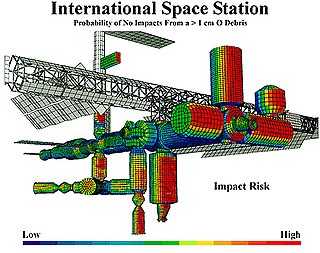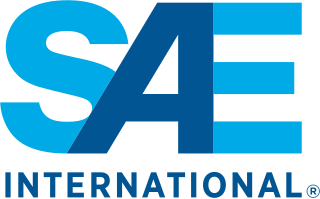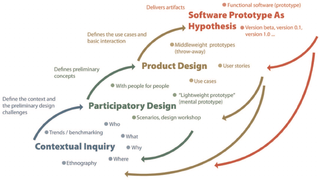Methodology
DRBFM methodology was developed by Tatsuhiko Yoshimura, a Quality Expert and a professor at Japan's Kyushu University. Yoshimura knew that design problems occur when changes are made without the proper level of supporting documentation. Using the philosophy of preventative measures (Mizenboushi), he created his own philosophy of DRBFM. Dr. Tatsuhiko Yoshimura supported the development and usage of DRBFM at many companies. He believes companies that implement the usage of DRBFM will be a better company. He believes the implementation of DRBFM requires discipline and engagement of everyone to the one goal of adding value to the customer by meeting engineering functional requirements and customer expectations.
The philosophy of DRBFM centers on three concepts:
- Good design
- Good discussion
- Good dissection
The DRBFM methodology is now a recognized documented process by SAE (Society of Automotive Engineers) and also by AIAG (Automotive Industry Action Group). SAE J2886 [1] DRBFM Recommended Practice was published in 2013 and the AIAG DRBFM Reference Guide was published in September 2014. Bill Haughey is the chair of both the SAE and AIAG committees to ensure a consistent application of the DRBFM process within both documents.
Good design
The basis for reliability is not to change a design; therefore, Mr. Yoshimura believes that if a design changes, the change should occur in small increments. Disturbance to a design is caused by the discontinuity of implementing changes affecting the interfaces between parts and interactions between systems. The design should not be changed in two different places simultaneously, because making too many changes too fast has the potential to result in failures faster than our capacity to detect them. One key to successful change is to make changes visible.
Good discussion
In discussions we should concentrate on the proposed changes to a design. If a proven good design is applied to future products, then the risk of failure is low; however, if changes are made to the existing design, then the probability of failure is increased.
Mr. Yoshimura advises individuals to work to understand the changes as opposed to trivializing them. He also advises that validation testing can help to identify design weaknesses; but, he also states that good discussions held at preliminary design reviews can achieve the same result. The good discussion that Mr. Yoshimura refers to here is also known as DRBFM (Design Review Based on Failure Modes).
The analysis for DRBFM is modeled after a linkage between a good design review and FMEA. A comprehensive, well-done FMEA can be considered one of the inputs (plus many other preparations sheets defined in the methodology) to decide the scope of a DRBFM but an FMEA is not required since the focus is based on the changes and interfaces. DRBFM is implemented based on novelty of change at any level of the product (design, process, supplier, etc.). The intent of the DRBFM is to make these changes visible by discussing them at length, as well as every possible concern for failure that may potentially occur - anything that impacts quality, cost, or delivery.
Good dissection
The third part of the GD3 concept. One objective of a good design review is to examine the results of validation testing, making all product weaknesses visible. This examination involves applying another GD3 concept, design review based on test results (DRBTR). When applying DRBTR, we must, wherever possible, observe the product test before, during and after completion. DRBTR looks for the validation (test) engineer to lead the review of a DRBTR review to exam the tested part and look for buds of problems that are about to happen (test failures are evident). DRBTR encourages the designer and test engineer to discuss potential problems (observations) or weaknesses from a cross functional multi-perspective approach, and to share this information. DRBTR has the designer observing actual test pieces and discussing test results in open discussions, such as design reviews. Furthermore, when dissecting test results, one must consider manufacturing variation, test profile and expected quality and reliability targets of the product. This process is defined in detail in Bill Haughey's e-book. [2]
Software testing is the act of examining the artifacts and the behavior of the software under test by validation and verification. Software testing can also provide an objective, independent view of the software to allow the business to appreciate and understand the risks of software implementation. Test techniques include, but not necessarily limited to:

Safety engineering is an engineering discipline which assures that engineered systems provide acceptable levels of safety. It is strongly related to industrial engineering/systems engineering, and the subset system safety engineering. Safety engineering assures that a life-critical system behaves as needed, even when components fail.

Hazard analysis and critical control points, or HACCP, is a systematic preventive approach to food safety from biological, chemical, and physical hazards in production processes that can cause the finished product to be unsafe and designs measures to reduce these risks to a safe level. In this manner, HACCP attempts to avoid hazards rather than attempting to inspect finished products for the effects of those hazards. The HACCP system can be used at all stages of a food chain, from food production and preparation processes including packaging, distribution, etc. The Food and Drug Administration (FDA) and the United States Department of Agriculture (USDA) require mandatory HACCP programs for juice and meat as an effective approach to food safety and protecting public health. Meat HACCP systems are regulated by the USDA, while seafood and juice are regulated by the FDA. All other food companies in the United States that are required to register with the FDA under the Public Health Security and Bioterrorism Preparedness and Response Act of 2002, as well as firms outside the US that export food to the US, are transitioning to mandatory hazard analysis and risk-based preventive controls (HARPC) plans.
Failure mode and effects analysis is the process of reviewing as many components, assemblies, and subsystems as possible to identify potential failure modes in a system and their causes and effects. For each component, the failure modes and their resulting effects on the rest of the system are recorded in a specific FMEA worksheet. There are numerous variations of such worksheets. An FMEA can be a qualitative analysis, but may be put on a quantitative basis when mathematical failure rate models are combined with a statistical failure mode ratio database. It was one of the first highly structured, systematic techniques for failure analysis. It was developed by reliability engineers in the late 1950s to study problems that might arise from malfunctions of military systems. An FMEA is often the first step of a system reliability study.
Reliability engineering is a sub-discipline of systems engineering that emphasizes the ability of equipment to function without failure. Reliability describes the ability of a system or component to function under stated conditions for a specified period of time. Reliability is closely related to availability, which is typically described as the ability of a component or system to function at a specified moment or interval of time.
Failure analysis is the process of collecting and analyzing data to determine the cause of a failure, often with the goal of determining corrective actions or liability. According to Bloch and Geitner, machinery failures reveal a reaction chain of cause and effect… usually a deficiency commonly referred to as the symptom…”. failure analysis can save money, lives, and resources if done correctly and acted upon. It is an important discipline in many branches of manufacturing industry, such as the electronics industry, where it is a vital tool used in the development of new products and for the improvement of existing products. The failure analysis process relies on collecting failed components for subsequent examination of the cause or causes of failure using a wide array of methods, especially microscopy and spectroscopy. Nondestructive testing (NDT) methods are valuable because the failed products are unaffected by analysis, so inspection sometimes starts using these methods.
Advanced product quality planning (APQP) is a framework of procedures and techniques used to develop products in industry, particularly in the automotive industry. It differs from Design For Six Sigma in that the goal of DFSS is to reduce variation.

ARP4761, Guidelines and Methods for Conducting the Safety Assessment Process on Civil Airborne Systems and Equipment is an Aerospace Recommended Practice from SAE International. In conjunction with ARP4754, ARP4761 is used to demonstrate compliance with 14 CFR 25.1309 in the U.S. Federal Aviation Administration (FAA) airworthiness regulations for transport category aircraft, and also harmonized international airworthiness regulations such as European Aviation Safety Agency (EASA) CS–25.1309.
A measurement systems analysis (MSA) is a thorough assessment of a measurement process, and typically includes a specially designed experiment that seeks to identify the components of variation in that measurement process. Just as processes that produce a product may vary, the process of obtaining measurements and data may also have variation and produce incorrect results. A measurement systems analysis evaluates the test method, measuring instruments, and the entire process of obtaining measurements to ensure the integrity of data used for analysis and to understand the implications of measurement error for decisions made about a product or process. Proper measurement system analysis is critical for producing a consistent product in manufacturing and when left uncontrolled can result in a drift of key parameters and unusable final products. MSA is also an important element of Six Sigma methodology and of other quality management systems. MSA analyzes the collection of equipment, operations, procedures, software and personnel that affects the assignment of a number to a measurement characteristic.
DMAIC refers to a data-driven improvement cycle used for improving, optimizing and stabilizing business processes and designs. The DMAIC improvement cycle is the core tool used to drive Six Sigma projects. However, DMAIC is not exclusive to Six Sigma and can be used as the framework for other improvement applications.
Failure mode effects and criticality analysis (FMECA) is an extension of failure mode and effects analysis (FMEA).

Software security assurance is a process that helps design and implement software that protects the data and resources contained in and controlled by that software. Software is itself a resource and thus must be afforded appropriate security.
Production Part Approval Process (PPAP) is used in the automotive supply chain for establishing confidence in suppliers and their production processes. Actual measurements are taken from the parts produced and are used to complete the various test sheets of PPAP.
"All customer engineering design record and specification requirements are properly understood by the supplier and that the process has the potential to produce product consistently meeting these requirements during an actual production run at the quoted production rate." Version 4, 1 March 2006
Eight disciplines problem solving (8D) is a method developed at Ford Motor Company used to approach and to resolve problems, typically employed by quality engineers or other professionals. Focused on product and process improvement, its purpose is to identify, correct, and eliminate recurring problems. It establishes a permanent corrective action based on statistical analysis of the problem and on the origin of the problem by determining the root causes. Although it originally comprised eight stages, or 'disciplines', it was later augmented by an initial planning stage. 8D follows the logic of the PDCA cycle. The disciplines are:
Functional safety is the part of the overall safety of a system or piece of equipment that depends on automatic protection operating correctly in response to its inputs or failure in a predictable manner (fail-safe). The automatic protection system should be designed to properly handle likely human errors, systematic errors, hardware failures and operational/environmental stress.
Lean startup is a methodology for developing businesses and products that aims to shorten product development cycles and rapidly discover if a proposed business model is viable; this is achieved by adopting a combination of business-hypothesis-driven experimentation, iterative product releases, and validated learning. Lean startup emphasizes customer feedback over intuition and flexibility over planning. This methodology enables recovery from failures more often than traditional ways of product development.
Robustness validation is a skills strategy with which the Robustness of a product to the loading conditions of a real application is proven and targeted statements about risks and reliability can be made. This strategy is particularly for use in the automotive industry however could be applied to any industry where high levels of reliability are required

Extreme programming (XP) is a software development methodology intended to improve software quality and responsiveness to changing customer requirements. As a type of agile software development, it advocates frequent releases in short development cycles, intended to improve productivity and introduce checkpoints at which new customer requirements can be adopted.

The research-based design process is a research process proposed by Teemu Leinonen, inspired by several design theories. It is strongly oriented towards the building of prototypes and it emphasizes creative solutions, exploration of various ideas and design concepts, continuous testing and redesign of the design solutions.
Failure modes, effects, and diagnostic analysis (FMEDA) is a systematic analysis technique to obtain subsystem / product level failure rates, failure modes and diagnostic capability. The FMEDA technique considers:





